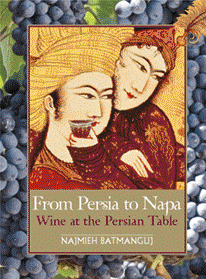 Pop Islam Pop Islam
Iran's Islamist and pop cultures seems to mingle by loosing themeselves into each other
The avenues of Teheran have changed their colours. Soon after the Islamic revolution in 1979, led by Khomeini, only the austere black was allowed to decorate the streets of the Iranian capital. Since then, the colours of the revolution have developped. Blinding yellow and fluorescent pink flags wave now in the alleys of Teheran. The colours that used to be part of the profane along the last 27 years have now been incorporated into the holy, with the exception of the rigorous dark women dresses.
The revolution overwhelmed the Iranian reality, without being able anymore to cleave the profane from the holy. In this way, the appearace of the Iranian republic has been changed to trasform everything into a product of the ayatollah’s regimes. However, this evolutionary process gave birth to a new pop-Islamic revolution, which influences religious ceremonies too.
In the markets of Teheran, old men sell CDs of shi’a religious rituals. In one of them, young people start shouting the name of the prophet ’Ali, increasing the rhythm until the sounds become similar to pop-disco music. All in a sudden, as if they were in a rave party, they get undressed, while continuing to repeat the name of ’Ali. In this revolution, the Islamist and pop culture seems therefore to mingle, by loosing themeselves into each other.
The Iranian president, Mahmoud Amhadinejad, finds himself at ease in this new modern revolution. After all, Amhadinejad describes himself as a man of the people and cannot be insensible to the appeal of a pop culture. When Khomeini was interviewed on TV, he used to appear in a spartanic room with a carpet.
Ahmadinjed, instead, dares. In his last conferences, he was sorrounded by multi-coloured folowers and roses from Shiraz. However, this was not yet enough for the internaut Iranian president, who holds even his own internet blog. In one of his latest events, he brought men dressed up with coloured local robes, enphasizing the national element. Many Iranians asked themeselves what was going on. Khomeini tried to destroy the national identity, by imposing the religious-Islamic one. He wanted his popolution to feel first Muslim and the Iranians.
Ahmadinejad changed again the rules. He brought up the national and the religious identity at the same level, adding a new element to the Iranian revolution. Ahmadinejad – provocatively called by the opposition in the country Ahmaqi-nejad, the race of the stupids – understood that to have his own population backing the nuclear project, a pop-Islamic revolution was not enough. He needed a pop-and most of all national-Islamic revolution.
 Actually, the streghtening of the Iranian army and the acceleration of the nuclear plan can only be possible if the feeling of belonging to the Iranian nation is restored. As part of this strenghtening, the 27th of August, Iran’s national orchestra performed the new symphony “nuclear energy”, after having played the symphony “o Iran” and the national anthem at the Teheran Vahdat Hall, which Ahadinejad proudly attended. Actually, the streghtening of the Iranian army and the acceleration of the nuclear plan can only be possible if the feeling of belonging to the Iranian nation is restored. As part of this strenghtening, the 27th of August, Iran’s national orchestra performed the new symphony “nuclear energy”, after having played the symphony “o Iran” and the national anthem at the Teheran Vahdat Hall, which Ahadinejad proudly attended.
The Iranian president showed already his adherence to the Iranian identity also during the World Cup. He couldn’t hide to root for the Iranian football team and he was even photographed trying to score a goal. Former heads of the Islamic Republic would have never been so pop-ulist and so nationalist, showing passion for football. However, despite Ahmadinejad’s novelties inside Iran, he keeps a classical Islamist line of governance.
So far, Iranian analysts state that the national-nuclear program is strongly tied to the coming of the twelfth Imam (Mahdi, the Guided one). In the shi’a tradition, the Mahdi, which reincarnates in every generation, will reveal himself at the end of the days to fight the final battle against the evil forces. In a speech addressed at the UN, Ahmadinejad referred to the near coming of the Imam, stating that he was seeing a celestial aura in the room.
According to Iranian writers in the opposition, the nuclear program is therefore aimed to build the arms for the war against the non-believers and for the counquest of Mecca in Saudi Arabia by the Mahdi. Iran experts believes that Ahmadinejad identifies the twelfth Imam as his spiritual and ideological mentor, the Ayatollah Mohammed Taqi Mesbah-Yazdi, political and religious figure, who few months ago praised martyrdom operations.
Mesbah-Yazdi was a major figure in the Hojjatiyeh (after Hojjat, or “proof”, one of the names to refer to the Mahdi), a religious sect despised and banned in 1983 by Khomeini for being too radical. The Hojjatiyeh, in which Ahmadinejad was a member too, believes that the Mahdi will return after chaos, war and bloodshed, which is thought to be very soon. Some analysts therefore think that Ahmadinejad do not consider Yazdi as the thelfth Imam, but that the two are developping the Iran’s nuclear option as a prescription to bring the Mahdi sooner.
So far, Ahmadinejad has changed the nature of the Islamic Republic, by adding a pop and a national element. However, this is just a cosmetic change as the inner nature of the leadership has become even more radical than its predecessors. Comment
|